- Faculty of Engineering
- Department of Electronics and Computer Engineering Department of Electrical Systems Engineering Department of Mechanical Systems Engineering Department of Intelligent Mechanical Engineering Department of Civil and Environmental Engineering Department of Architectural Engineering
- Faculty of Applied Information Science
- Department of Computer Science Department of Information and Communication Department of Information Systems and Management
- Faculty of Environmental Studies
- Department of Architectural Design Department of Global Environment Studies
- Faculty of Life Sciences
- Department of Clinical Engineering Department of Food Sciences and Biotechnology
- Graduate School
- Major in Intelligent Structure and Functional Science Major in Electrical and Electronic Engineering Major in Mechanical Systems Engineering Major in Civil and Architectural Engineering Major in Information Systems Science Major in Environmental Studies Major in Biological and Biomedical Engineering
Faculty of Engineering
Department of Civil and Environmental Engineering
- Department Introduction
- Education and Research Areas
- Subject Introduction
- Curriculum
- Careers and Further Study
- Department Introduction MOVIE
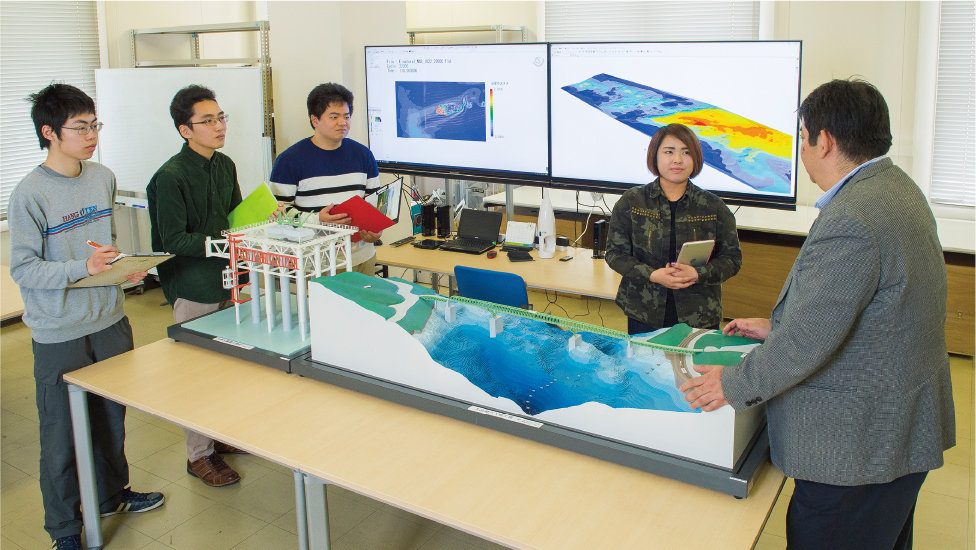
Producing engineers who will build the environmentally-friendly foundations of our society.
Building levees to make rivers safe. Constructing roads and railways to move people and materials and to support the economy. Developing uninterruptible water, power and communications facilities. The Department of Civil and Environmental Engineering cultivates engineers who understand how to plan, design, build and maintain social infrastructure contributing to greater safety and abundance and who are able to apply this knowledge for the sake of their communities, quality of life and a healthier environment.
Education and Research Areas
-
Structural Design and Construction
Students learn soil mechanics for road design and construction, land preparation, underground space development, and for studying landslides and other sediment disasters, and they learn about fundamental building design techniques. They are also taught construction project-essential concrete mixing design, construction techniques, steel-reinforced concrete structure design methods and more. Furthermore, students learn structural mechanics, structural design engineering and other subjects applicable to designing bridges, such as long-span bridges and bridges within cities.
-
Urban Space Planning and Disaster Prevention
Students study urban/regional planning and traffic planning, as well as disaster prevention/mitigation planning and even landscape planning, and they are equipped with skills enabling them to design disaster-resilient, highly convenient, safe and comfortable urban spaces. In addition, student learn about the history and philosophy of cities and how to capitalize on a city’s historical and cultural resources in creating an attractive, vibrant urban space that is comforting and comfortable.
-
Environmental Protection and Restoration
Students study river engineering and aquatic environmental systems, and they are taught how to design water and sewage systems, how to perform water and air behavior analysis/environmental impact assessment and river flooding behavior analysis and prevention measure design, among other skills. In addition, students learn how to contribute to a more environmentally-friendly society through the use of environmental remediation and environmental diagnostics and evaluation, and they are equipped with environmental restoration, remediation and creation planning and design skills, as well as an understanding of environmental diagnosis and evaluation methods. Furthermore, students become familiar with renewable energy and resource recycling.
Subject Introduction
-
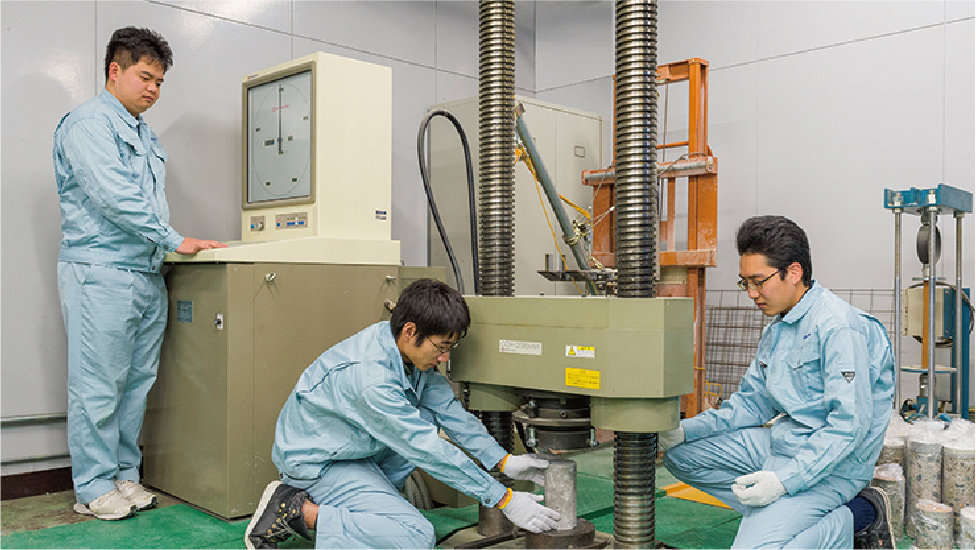
Concrete Engineering / Reinforced Concrete Engineering
Concrete is used in much of the infrastructure that facilitates the convenience of modern life, including in railroads, roads and bridges. In this class, students gain an understanding about the characteristics of concrete, as well as how to utilize it, such as in building highly disaster-resistant concrete structures.
-
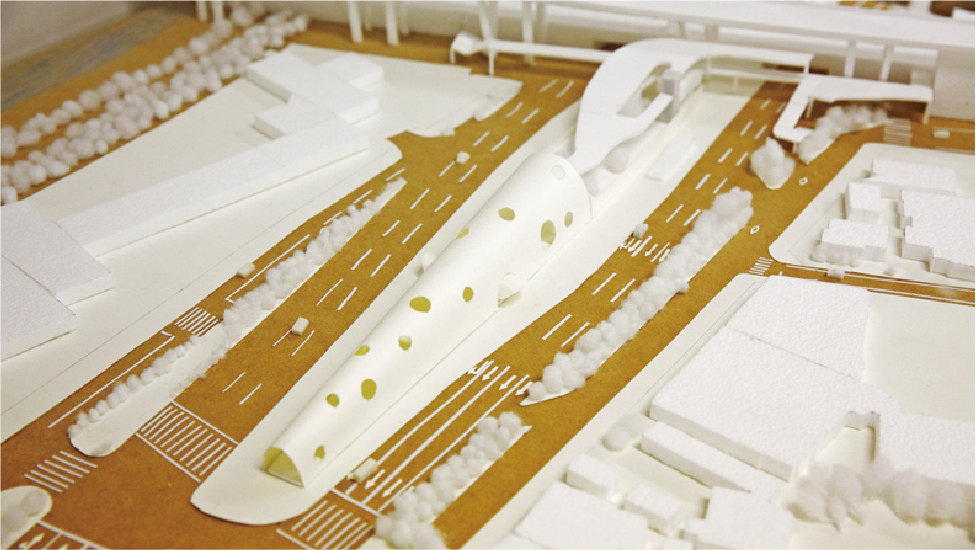
Space Creation and Design / Space Creation Practical Training
Students will acquire the skills to create their own plans and proposals for engineering-focused solutions to challenges related to the creation of safe and comfortable building structures and urban spaces. The aim of the class is to create comprehensive living spaces.
-
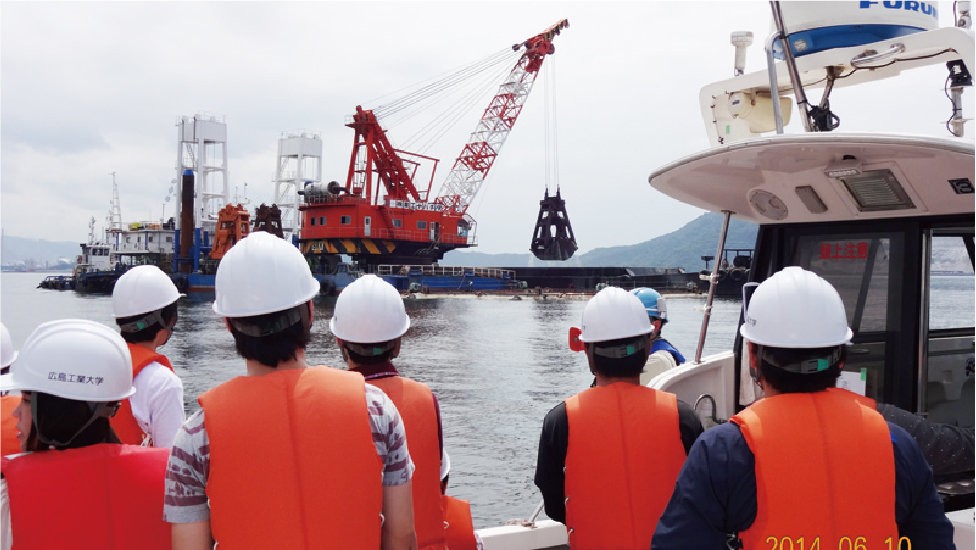
Environmental Restoration Technology
Students learn about approaches, policies and techniques used for restoring natural environments lost to development and other processes, and this knowledge is gleaned from actual environmental restoration projects both inside and outside Japan, such as in the Seto Inland Sea, as well as field study and investigation. Students will gain a deeper understanding about the creation of an environmentally-friendly society in which the natural environment and social environment coexist harmoniously.
-
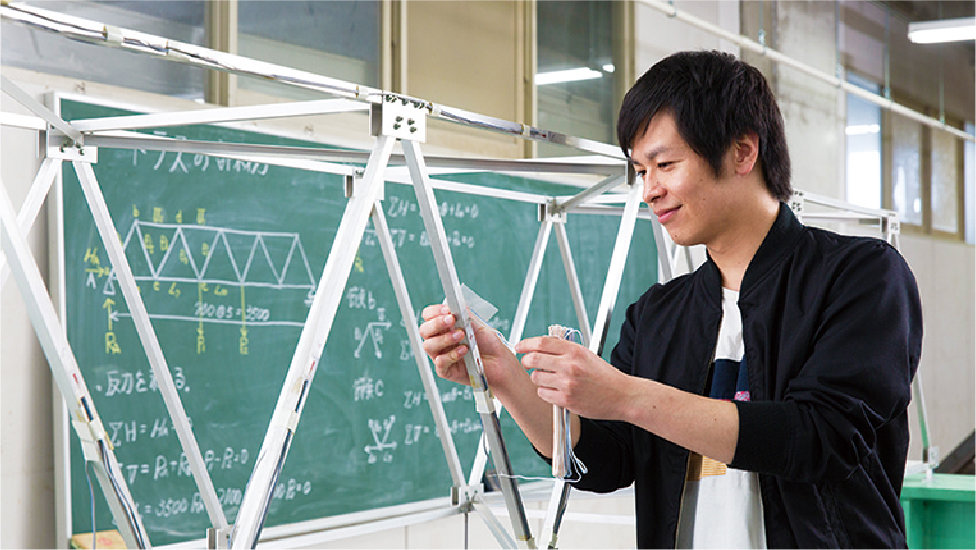
Bridge Engineering
Students will obtain a basic grounding in bridges which includes the history of bridges and the structures and mechanical properties of various bridge types, such as how loads act on bridges and the construction of arched bridges.
-
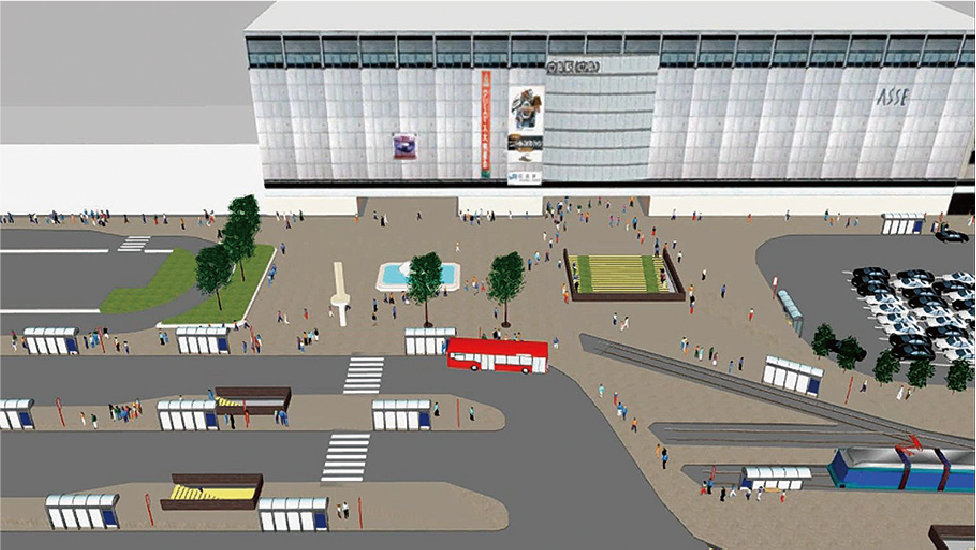
Transportation Planning
In the context of addressing traffic problems, such as traffic congestion, traffic accidents and traffic adaption to population aging coupled with a declining birthrate, that are of major concern to local communities, students will be equipped with fundamental knowledge applicable to traffic facility/system development, operation and control planning based on traffic demand forecasting.
Curriculum
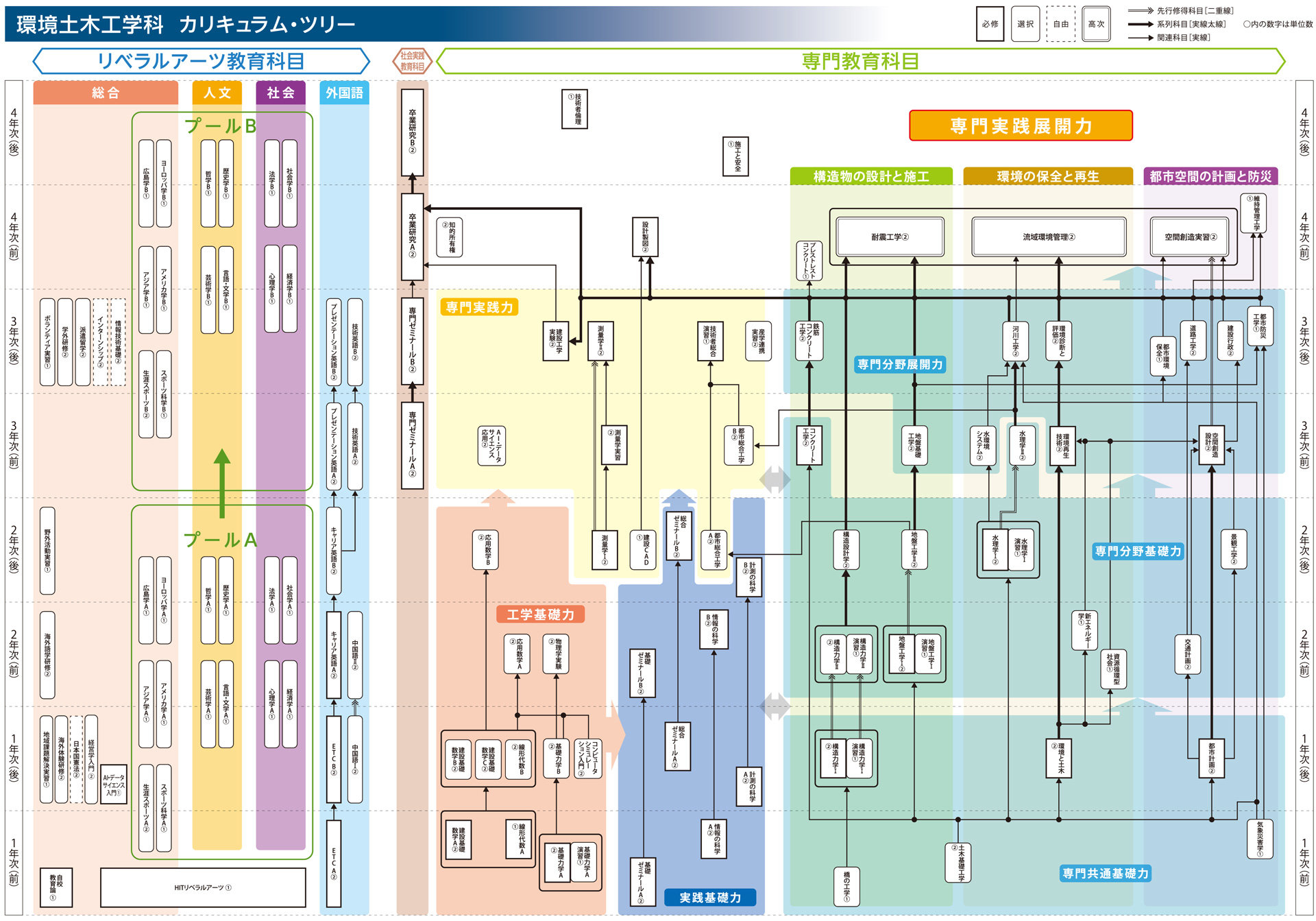
Japanese only






